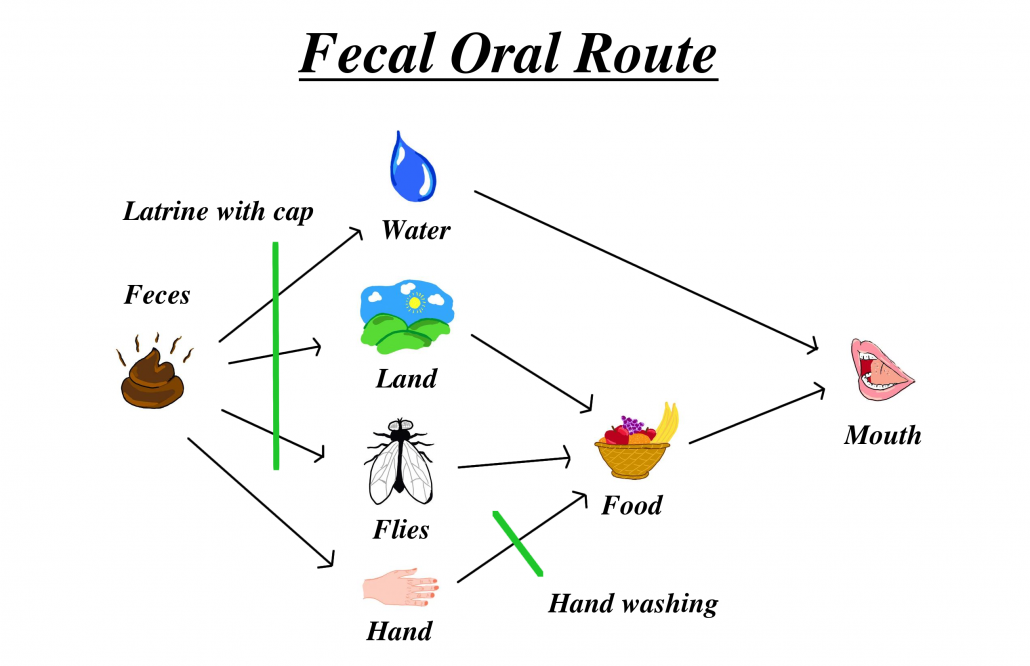Vetiver Latrine Guidebook
This webpage contains some excerpts of the “how to” guidebook to successfully install a sustainable, biologic, pit latrine using vetiver grass. Go to our resources page for the complete and most updated version of this guide in multiple languages.
The use of vetiver grass (Chrysopogon zizanioides) replaces the need for a concrete block lined pit, creates privacy and actively helps decompose the waste. Jiji grass (Achnatherum splendens) can be used as an alternative in colder or harsh conditions where vetiver does not grow.

3D view of the vetiver latrine
Benefits:
- Far less expensive than traditional latrines ($25 for materials instead of $250).
- Easily adaptable so that an elevated toilet, ventilation and a privacy shelter can be added if desired.
- Far less materials needed making installation in remote regions possible.
- Vetiver roots reinforce pit walls effectively.
- Easily moveable concrete slab allows for reuse of materials after latrine pit is full.
- Vetiver provides a privacy screen, but can be cut regularly and has multiple uses (fuel, animal feed, compost, crafts, thatch roofing, earth wall construction, etc).
- Vetiver roots actively help decomposition of the waste and reduce pollutants leaking from the pit.
- Easy to build, so that all in need can master the process and make latrines for themselves.
- Self cleaning and repairing, the slope of the slab allows rainwater to wash into the pit and clean the latrine and damage to the vetiver will grow back.
Cons:
- Vetiver grass has some minimal needs that must met: 1) watering if planted in the dry season; 2) at least a partially sunny location; 3) protection from grazing animals (until plants are established).
- Vetiver grass takes 1-2 growing seasons to reach full size, to enjoy the benefits of the privacy screen.
- Local sanitation laws may prohibit the use of a vetiver latrine.

Vetiver prevents erosion even in severe conditions. This image shows a vetiver hedge holding a wall of soil in place despite the fact that the soil around it, without established grass, completely washed away.

Vetiver roots are massive, up to 4-5 meters deep. This image shows a clump of vetiver (leaves and stems have been cut back) after being dug up by three men using hand held hoes aided by a wood tripod to help lever the clump out of the ground.
Pit Location
Four factors are important to consider when determining the best location for the vetiver latrine.
- Sun: Vetiver loves sun and at a minimum needs partial sun exposure throughout the day. If an area has dense overgrowth, then it is best to prune back some of the surrounding trees and shrubs.
- Contamination: It is important that the contents of the latrine pit stay safely in the pit. Simple precautions can be taken to prevent any effluent leaking from the pit (leachate) from contaminating drinking water or local waterways. The pit should be located downhill from water sources whenever possible, especially sources of drinking water such as springs and wells. Even then, the pit should be 30 meters from water sources. The pit should be about 2 meters above the groundwater table and above flood level during the wet season. In some cases, the features of the site maybe more important than the distance.
- Convenience: The latrine should be close to the family’s dwelling, so that a sick person can reach it in the middle of the night, but far enough away so that the flies from the latrine cannot contaminate the kitchen or odors penetrate the house. Placing the latrine within 6 meters of any home, is a good rule of thumb.
- Level Surface: Although the pit can be located on sloped ground, the concrete slab once in place needs to be level.

Sanitation
Some diseases are caused by germs that live in feces and can only spread by the fecal oral route. The common ways a disease can spread from feces to the mouth are contamination of: water, land, flies, hands and food. The combination of the use of clean water, a well-built latrine and hand washing completely blocks these routes of infection and promotes health.

Routes of Fecal Oral disease transmission and how the latrine and hand washing prevents them.
The Design:

Vetiver latrine design overview

Vetiver latrine round design

